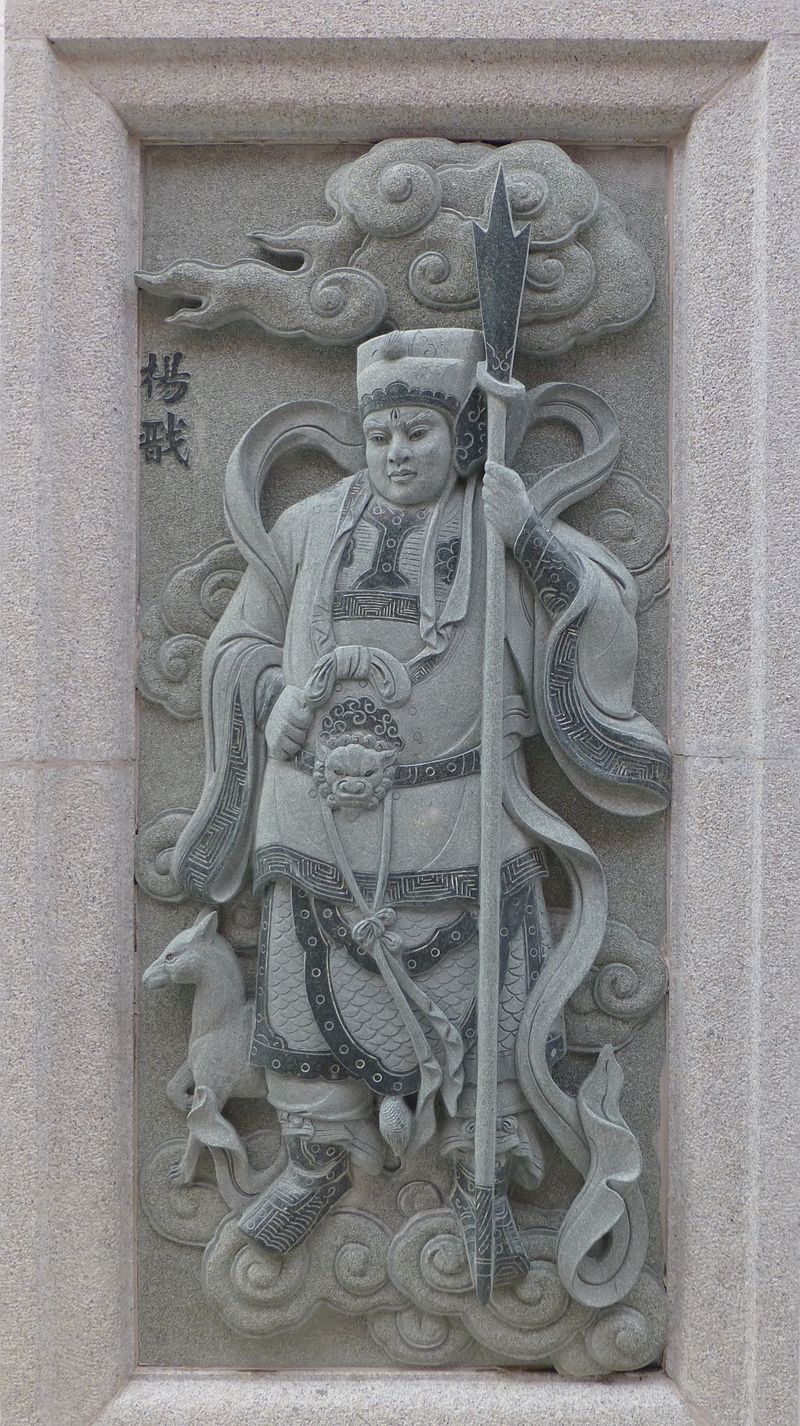The Precious Scroll of Erlang (Erlang Baojuan, 二郎寳卷; full name Qingyuan Miaodao Xiansheng Zhenjun Yiliao Zhenren huguo youmin zhongxiao Erlang Baojuan, 清源妙道顯聖真君一了真人護國佑民忠孝二郎開山寶卷), is an important baojuan from the 1560s that contains the heroic deeds of the immortal Erlang (二郎) (fig. 1), including his defeat of Sun Wukong (PDF page 46). This shows that the Monkey King was mentioned in a religious context 30 years before the standard Ming edition of Journey to the West (Xiyouji, 西遊記, 1592) was even published. Therefore, apart from recording the religious story of Erlang, it adds to that of Sun Wukong.
I must thank Dr. Benjamin Brose for sending me a PDF of the scroll. I’m excited to archive it on my blog for other scholars to access and read.

Fig. 1 – A relief carving of Erlang as Yang Jian (楊戩) from Investiture of the Gods (c. 1620) (larger version).
Scroll description:
In 1562 a text entitled Erlang baojuan (Precious scroll on Erlang) appeared, providing further information on the emerging Eternal Mother myth. Based on the story of Erlang’s valiant fight with the Monkey King, a famous and entertaining episode from the classic novel Journey to the West (which, incidentally, was given the finishing touches around the same time), the Erlang baojuan describes the final subjugation of the Monkey King by the semidivine Erlang, thanks in large measure to the assistance provided by the Eternal Mother. This text also seems to presage the legend surrounding the building of the Baoming Si, Temple Protecting the Ming dynasty, as described hereafter. In it the story of the bodhisattva Guanyin incarnating as a nun by the name of Lü is first being told. According to this text, the nun had tried unsuccessfully to dissuade Emperor Yingzong from fighting the Oirat Mongols prior to his debacle at Fort Tumu in 1449. When Yingzong was restored to the throne in 1457 after his long captivity, he rewarded the nun for her loyalty and courage and built a temple for her, naming it the Baoming Si. The temple had been reportedly in existence since 1462. By the late years of the Jiajing reign (1522–1567), however, it came under the sway of believers of the Eternal Mother religion (Shek & Tetsuro, 2004, p. 252).
Archive link:
Click to access unnamed-file.pdf
Source:
Shek, R., & Tetsuro, N. (2004). Eternal Mother Religion: It’s History and Ethics. In K Liu. & R. Shek. (Eds.). Heterodoxy in Late Imperial China (pp. 241-280). Hong Kong: University of Hawai’i Press.
